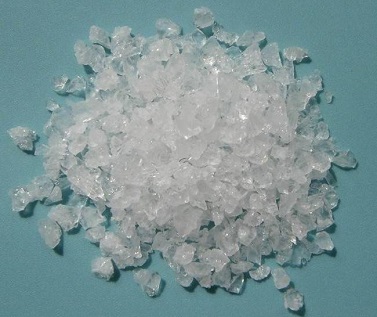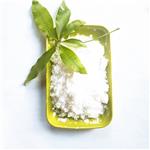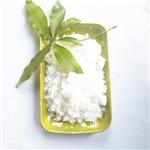Description
Barium fluoride (chemical formula: BaF2) is a inorganic salt consisting of barium and fluorine. It appears as a transparent crystal and is presented in the mineral frankdicksonite in nature.

Barium fluoride has many applications. It can be used for the manufacturing of optical components such as lenses as well as the windows of infrared spectroscopy. It can also be used as scintillators for detection of X-rays, Gamma rays and other high energy particles. In aluminium-metallurgy, it is used as additive in aluminium refining process. It can also be used as a flux and opacifying agent during the enamel and glazing first production. Moreover, it is also applied in the production of welding agents. Barium fluoride is made through the reaction between barium carbonate with ammonium fluoride.
References
https://www.webelements.com/compounds/barium/barium_difluoride.html
https://en.wikipedia.org/wiki/Barium_fluoride
http://www.solvay.com/en/markets-and-products/featured-products/Barium-fluoride.html
Description
Barium fluoride appears as colourless, odourless crystals/white powder and is slightly
soluble in water but soluble in ethanol and methanol. When heated, barium fluoride
decomposes and emits toxic fumes of fluorine and barium. Barium fluoride is used as
a preopacifying agent and in enamel and glazing frits production. Its other use is in the
production of welding agents (an additive to some fluxes, a component of coatings for
welding rods and in welding powders). It is also used in metallurgy as a molten bath for
refining aluminium.
Chemical Properties
Barium fluoride, BaF2, is a white crystal or powder.Under the microscope crystals may be clear and colorless. Barium fluoride is used commercially in combination with other fluorides for arc welding (qv) electrode fluxes.
Physical properties
Barium fluoride (BaF2), also known as barium(II)
fluoride, is a solid which can also be a transparent
crystal. Its molecular weight is 175.34 g/mol. It occurs
in nature as the mineral “Frankdicksonite”. It occurs as
a white powder with a melting point of 1290 and a boiling point of 2259°C. It is slightly soluble in water
(0.159 at 0.0°C and 0.162 g/100 ml of water at 20°C). The solid generally assumes the fluorite structure, but
when subjected to high pressure, changes to the PbCl2
structure. In the vapor phase, the BaF2 molecule is
nonlinear with an F–Ba–F angle of approximately 108°C.
Uses
As a flux and opacifier in vitreous enamels; in the manufacture of carbon brushes for DC motors and generators; in heat-treating metals; in embalming; in glass manufacture.
Uses
Barium Fluoride is used in ceramic flux, carbon brushes for electrical equipment, glass making, in the manufacture of other fluorides, crystals for spectroscopy, electronics and dry-film lubricants. Barium Fluoride is used in spectroscopic components. Barium Fluoride is often suitable for applications in the passive IR band (8 to 14 ?m) and is often used as a viewport window for thermography.
Production Methods
A single crystal of Barium fluoride is grown from the melt solution by the Kyropoulos method and the Stockbarger method.
Application
Barium fluoride is used as the transmission window in λ: 150 nm–10 mm and as the Reststrahlen filter in λ: 30–60 mm.
Flammability and Explosibility
Non flammable
Safety Profile
A poison by ingestion
and intraperitoneal routes. Moderately toxic
by subcutaneous route. An experimental
teratogen. See also FLUORIDES and
BARIUM COMPOUNDS (soluble). When
heated to decomposition it emits toxic
fumes of F-.
Solubility in water
Barium fluoride is soluble in water with the solubility of 0.17 g/100 g H
2O (10 ℃). It is also soluble in acid and ammonium chloride.
Purification Methods
Wash it well with distilled H2O and dry it in a vacuum. Its solubility in H2O is 1.6g (10o), 1.6g (20o) and 1.62g (30o) per L, and is soluble in mineral acids and aqueous NH4Cl. It may be stored in glass bottles. [Kwasnik in Handbook of Preparative Inorganic Chemistry (Ed. Brauer) Academic Press Vol I p 234 1963.]
Structure and conformation
The space lattice of Barium fluoride (BaF2) belongs to the cubic system, and its calcium fluoride structure has a lattice constant of a=0.6187 nm and Ba–F=0.268 nm.






